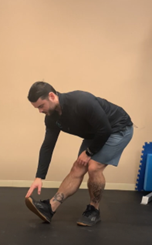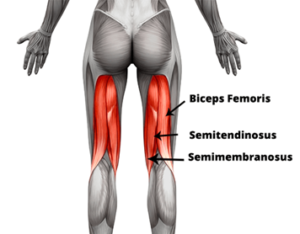One of the most powerful muscles for any athlete is the hamstring. For an athlete, generating force and momentum in sports is key to success. However, when our bodies are not trained properly for explosive or directional movements, the hamstrings can take on an unwanted workload making them susceptible to being tight and overworked.
The hamstrings attach to the hip and knees and are responsible for extending the hip and flexion the knee. The hamstrings are composed of three main muscles: the semitendinosus, semimembranosus, and biceps femoris. Hamstrings are pivotal in running, jumping, sprinting, explosive movements, directional changes, and stability for weight lifting. Both overuse or undertraining of the hamstrings can cause gradual soreness, tightness, or even in some cases if gone untreated, cause injury.
Programming workouts to help train and strengthen the hamstrings is vital to injury prevention. For daily and athletic activities, a hip hinge is always the first key component in retraining the hamstrings and preventing injury. A deadlift is essential to learning a proper hip hinge movement while building hamstring and glute strength. Incorporating lying hamstring curls, single leg deadlifts, and even kettlebell swings to help load and build strong hamstrings can pay off long term. Athletes who run or do directional changes in their sport should also introduce short sprinting exercises into their routine. A combination of training slow and fast twitch hamstring fibers can bulletproof your hamstrings for sports.

Weak or Overworked?
So you find yourself with chronic hamstring tightness. Before you start cranking on the hamstring curl machine at the gym ask yourself this question: Do my hamstrings hurt because they are too weak to do their job, or are they being overworked to compensate for your weak glutes?
In the modern lifestyle, sitting has caused immense detriment to people’s ability to use their gluteus muscles properly. When our glutes are weak, the hamstrings work overtime to pick up the slack. We see a lot of patients in our office coming in with complaints of lower back pain and hamstring tightness. Your hamstrings may not be weak, they may just need your glutes to start doing their share of the work! If this is the case, a glute strengthening program may be the solution to your hamstring problems. The best system is when your hamstrings and glutes work in synergy with one another.

